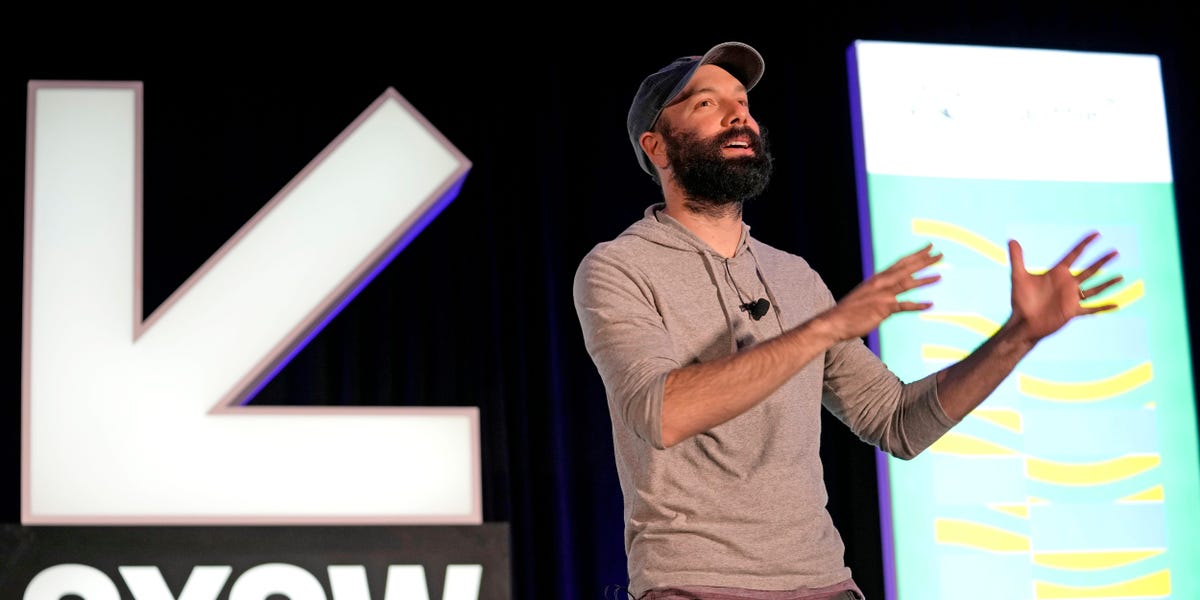Subscriptions to your favorite creators or podcasts aren’t enough, according to Patreon. Fans and creators alike are craving connections that go beyond consuming content.
Patreon, the pioneering subscription company founded in 2013 as a way to help creators make money, launched its first major community-focused features earlier this month: group chats and profiles.
Creators can now chat with their most dedicated fans who subscribe to their Patreon using the platform’s in-app group chat tools. As of now, creators will be able to launch up to four separate chats and can dictate which tiers of members have access to these chats. Fans can also now create custom profiles within the Patreon app, which will include how long a fan has been a patron of the creator.
“We often say that creators have never felt further from their fans, and fans have never felt further from each other,” Patreon’s community product lead Sam Haveson told Insider. “A lot of the work we’ve been doing with community is to get back to the heart of niche communities, the heart of creator fandoms.”
The decision to introduce these features is the beginning of what Patreon cofounder and CEO Jack Conte described as the company’s “next chapter.”
“We’re a decade old,” Conte told Insider. “We’re expanding beyond membership and we’re thinking of ourselves more now, not as a membership company, but as a creator company, as a fandom company, as a company that helps creators and their fandoms build energized communities and be successful.”
In the past year, Patreon introduced several other features that expanded its in-app offerings, such as video content native to Patreon, as well as commerce tools that let creators sell digital goods.
Looking forward, Patreon wants to solve three problems for creators, according to Conte.
Here are the 3 key areas Patreon is focused on:
-
Providing creators with an algorithm-free platform to share content. In other words, “creative freedom,” as Conte put it. “For a creator, there’s this huge pressure now to make what you think is going to ride the algo,” Conte added. “Instead of making what you want to make and making what you feel like is self-expressive from your heart, there’s this feeling that in order to get distribution, I must play by the rules of XYZ’s ranking algorithms. And that’s a really destructive force for creativity.”
-
Adding more ways for creators to directly communicate with fans. “It is impossible to run your business without being able to talk to your people,” Conte said. Creators’ fans are the ones buying tickets to shows or subscribing to new courses, often even promoting the work creators put out because they are a fan of it. “If you can’t reach them, you can’t build a business and you can’t build a community, and you can’t have a thriving fandom,” Conte said.
-
Bringing more stability to creators in the midst of social-media change. “This third problem that we’re setting out to solve is really how to have a more stable foundation and business as a creator when you post your work online,” Conte said. Many social-media platforms were not actually built or designed for creators, Conte added.
Why launch community tools now?
As Insider reported in August, social media is going through an existential crisis: many users are exchanging Instagram feeds for a more community-focused online experience in group chats or on platforms like Discord.
Conte sees TikTok as a bear in sheep’s clothing for the social-media experience: “At the time, it was clear something big was happening, but it wasn’t really clear the scale or depth of the impact that TikTok was going to have on the entire internet and the social-media landscape.”
With hyper-curated algorithms and recommendations in every feed, creators’ online communities they had spent years building became “diluted,” Conte said. “Followers were not getting the messages that were being sent from their favorite creators, they weren’t seeing posts, they weren’t seeing media. Their feeds were getting clogged up by recommendations.”
TikTok mega-creators, in particular, struggled to turn their massive followings and record-breaking views into true communities and fanbases. Patreon, which tried to recruit several of these internet celebrities, learned this firsthand — Insider’s Geoff Weiss reported in 2022 that the platform’s deals with TikTokers fell short of expectations.
In a September memo sent to Patreon staff announcing its new community tools, which was shared with Insider by the company, Conte wrote: “A ‘follow’ on TikTok means almost nothing.”
Perhaps after an uncertain year for Patreon (like many other companies, it had layoffs and a valuation drop), the company could be back in the right place at the right time.
“I’m not sure that we could have come at this particular problem three years ago,” Conte said of the current shift in the social-media landscape and the need for more community tools. “It wouldn’t have been needed.”
As other platforms take on this new dilemma — from Instagram testing more “Close Friends” options to TikTok building social-networking tools — Patreon sees its outlier status as a social platform as a benefit.
“We are not trying to get 2 billion people on Patreon,” Conte said. “When you have an ad model, you need volume. It’s about quantity, it’s about time spent … But that is not our business model and that’s not how we’re approaching the problem. We don’t even measure things like time spent — if you were to ask me what is time spent, I literally don’t know.”
Instead, Patreon has its eyes on capturing the die-hard fanbase of creators.
“It’s the five to 15% of your true fans,” Conte said. “We’re not trying to get creators to migrate their entire audience onto Patreon, which is what the strategy that a lot of these other apps have, because they need it.”
Read the full article here





